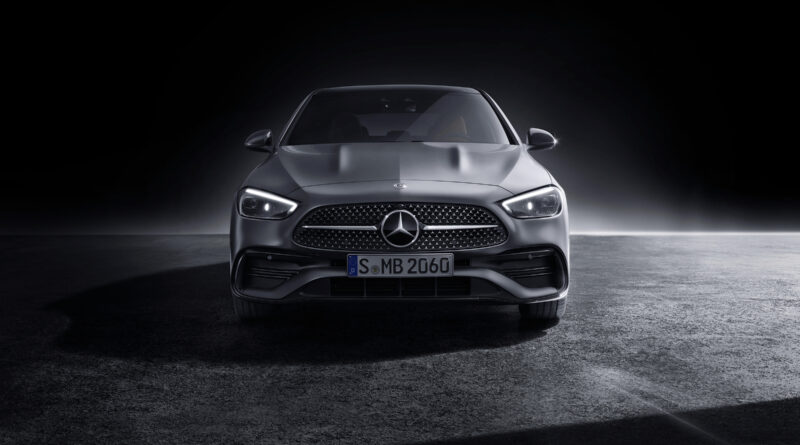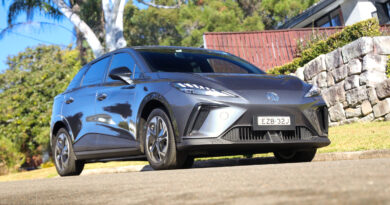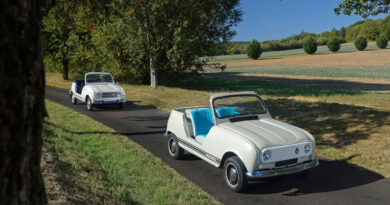Mercedes-Benz C-Class PHEV family to grow beyond C300e
There will be more than one petrol-burning plug-in hybrid electric vehicle in the new Mercedes-Benz C-Class family. Another will join the C300e, according to a company spokesman.
This news emerged during an online event in Stuttgart to introduce the C300e to international media, the latest addition to the Mercedes-Benz PHEV family, which also includes the recently-released A250e. This 100km-electric-range PHEV, due to launch in European markets from September, will be sold in Australia.
Asked if the C-Class family would grow to include another PHEV with a petrol engine, spokesman Andy May confirmed Mercedes-Benz has another one under development. He was unprepared to reveal more, except to say that it will not be ready until 2022 at the earliest.
In the meantime, the new-generation C300e will be a much more electric PHEV than the model currently sold in Australia. Using a similar battery pack and motor to the big S-Class PHEV, the new C300e’s electric-only driving range is around 100km. That’s double the 52km of the current car.
Mercedes-Benz will also produce a C-Class PHEV with a diesel engine, due to go on sale in Europe later this year. Mercedes-Benz Australia has been quietly backing away from diesel-powered cars. The local C-Class line-up is these days a diesel-free zone, so the new diesel C-Class PHEV is very, very unlikely to ever be sold here.
However, we can expect the AMG variants of the new C-Class, which will switch to a four-cylinder hybrid setup set to provide more grunt than the V8s they step in for.
Back to the new C300e. While it has only a four-cylinder engine, the electrical equipment that makes it a PHEV is almost identical to that in the vastly more expensive and six-cylinder Mercedes-Benz S580e.
The electric motor of the C300e is the same, except for its lower maximum power output. This difference is explained by the car’s smaller battery pack; 96 cells compared to 108 cells. This restricts the maximum power the battery pack can produce, thus reducing the maximum motor output to 95kW.

Still, performance of the PHEV when driving in electric mode is more than adequate. During a virtual co-drive, with Tom the German engineer at the wheel, the C300e had no trouble keeping up with morning traffic on roads around Stuttgart. It easily ran up to its electronically limited 140km/h top speed on the autobahn.
With the C300e’s turbo 2.0-litre and electric motor working in unison, the combined maximum power output is a very healthy 230kW. It will be a decently quick car when the pedal is floored.
On start-up the C300e’s default driving mode is Electric… if there’s charge in the battery pack. As in the S-Class PHEV, the driver can choose other driving modes according to circumstances. These include Hybrid and Sport, which forces the ICE to start. There’s also a mode to preserve battery charge for later use.
In Electric mode the steering-wheel shift paddles can be used to alter the level of regenerative braking in three steps from nothing to strong. There’s also an auto regen mode. This uses the car’s array of safety-system sensors to detect other vehicles ahead, and uses regenerative braking to adjust the speed of the C300e accordingly.
Things get even more sophisticated when a sat-nav destination is entered. In this case the C300e will also use digital map data, as well as its sensors, to calculate the best way to operate the powertrain for maximum efficiency over the chosen route.
While the C300e’s on-board AC charger will be able to handle up to 11kW from a wallbox, DC fast charging at up to 55kW will be offered as an option. It will cut the time needed to fully recharge the car’s 25kWh battery pack to just 30 minutes.
The mainstream C-Class line-up, all low-voltage hybrids with petrol-burning fours, is due to reach Australia around October. The C300e is likely to arrive a little later.
Pricing? Yet to be decided, but expect the C300e sedan to be in the vicinity of $90,000. Not cheap, but at least compared to the S580e, a bargain.




